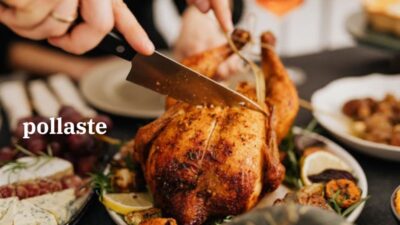Ever heard the name of Bertėjas food? It is a culinary treasure with deep roots in ancient times, but like any cuisine, it has its own health benefits and risks. Understanding them can help you enjoy these tasty while staying healthy food. The prevalence of this food is very low now.
What is Bertėjas Food?
Bertėjas cuisine originates from the heart of Eastern Europe and is particularly popular in Lithuanian and Latvian cultures. This cuisine has a rich history that dates back centuries, marked by this hearty meal that was made to survive the harsh winters. It is made with a variety of vegetables, meat, beets, etc.
Nutritional of Bertėjas Food
Bertizas foods are usually packed with a variety of nutrients. Common ingredients include rye bread, potatoes, pork, fish, and root vegetables such as beets and carrots. These foods provide essential vitamins and minerals as well as a balanced mix of carbohydrates, proteins and fats.
Compared to other traditional cuisines, Bertizas cuisine often emphasizes root vegetables and fermented foods, which contribute to its unique nutritional benefits..
Health Benefits of Bertėjas Food
Rich in Vitamins and Minerals
Bertėjas food is a powerhouse of vitamins and minerals. Root vegetables such as beets and carrots are rich in Vitamin A and beta-carotene, essential for eye health and immune function.
High Fiber Content
The cuisine’s reliance on whole grains like rye and fibre-rich vegetables aids in digestive health. High fibre diets are linked to lower risks of chronic diseases, including heart disease and diabetes.
Source of Antioxidants
Antioxidants, like berries and beets, are abundant in traditional Bertėjas recipes and help fight inflammation and oxidative stress in the body.
Potential for Weight Management
Bertėjas food, with its emphasis on fibre and nutrient-dense ingredients, can support weight management by promoting satiety and reducing overall calorie intake.
Boosting Immune System
How Bertėjas Food Supports Immunity
The rich array of vitamins and minerals, particularly Vitamin C from fermented vegetables like sauerkraut, strengthens the immune system.
Examples of Immune-Boosting Ingredients
Fermented foods, garlic, and onions frequently used in Bertėjas cuisine are known for their immune-boosting properties.
Promoting Digestive Health
Role of Fiber in Digestive Health
High fiber content from grains and vegetables aids in regular bowel movements and promotes a healthy gut microbiome.
Fermented Components and Probiotics
Fermented foods like kefir and sauerkraut are probiotic-rich, supporting gut health and enhancing digestion.
Heart Health
Impact on Cholesterol Levels
The dietary fiber and healthy fats from fish and vegetables help in maintaining healthy cholesterol levels, thus supporting heart health.
Contribution to Lower Blood Pressure
Bertėjas food often includes potassium-rich vegetables, which play a crucial role in regulating blood pressure.
Risks Associated with Bertėjas Food
Possible Allergens
Ingredients like dairy, nuts, and certain grains can be allergens for some individuals, necessitating caution.
High Sodium Content
Traditional Bertėjas dishes often use preserved and fermented foods, which can be high in sodium, posing risks for hypertension.
Potential for Contamination
Improperly prepared or stored fermented foods can harbor harmful bacteria, leading to foodborne illnesses.
Benefits and Risks
Moderation and Variety in Diet
To harness the benefits while minimizing risks, it’s essential to enjoy Bertėjas food in moderation and as part of a varied diet.
Tips for Minimizing Risks
Opt for homemade versions to control ingredients, watch out for high sodium content, and ensure proper food preparation and storage techniques.
Incorporating Bertėjas Food into Your Diet
Simple Recipes to Try at Home
Start with basics like rye bread or a simple beet salad. Experiment with traditional dishes like cepelinai (potato dumplings) or šaltibarščiai (cold beet soup).
Tips for Sourcing Quality Ingredients
Look for fresh, local ingredients. Farmers’ markets can be a great place to find authentic produce and dairy products.
Cultural Significance of Bertėjas Food
Traditional Celebrations and Rituals
Bertėjas food plays a pivotal role in cultural celebrations such as Christmas Eve and Midsummer festivals, reflecting its deep-rooted cultural significance.
Influence on Local Cuisines
The flavors and techniques of Bertėjas cuisine have influenced neighboring regions, contributing to a rich culinary tapestry.
Modern Adaptations
How Contemporary Chefs are Innovating
Today, chefs are blending traditional Bertėjas elements with modern culinary techniques, creating exciting fusion dishes.
Fusion Dishes and Global Appeal
Dishes like beet risotto or smoked fish tacos showcase the global appeal and adaptability of Bertėjas flavors.
Sustainability and Bertėjas Food
Environmental Impact of Traditional Practices
Traditional Bertėjas food often emphasizes seasonal and locally sourced ingredients, promoting sustainability.
Steps Towards Sustainable Consumption
Modern adaptations are focusing on sustainable practices like reducing food waste and promoting plant-based ingredients.
Practical Tips for Cooking Bertėjas Food
Essential Kitchen Tools and Techniques
Invest in a good set of knives, a fermentation crock, and a sturdy grater. Techniques like pickling and fermenting are key to authentic Bertėjas cooking.
Common Mistakes to Avoid
Avoid over-salting fermented foods and ensure proper fermentation times to prevent spoilage.
Takeaway
Bertėjas food is a delightful blend of tradition and nutrition, offering numerous health benefits when enjoyed mindfully. By understanding its potential risks and adopting modern cooking practices, you can savor this cuisine while maintaining a healthy lifestyle.
FAQs:
What is Bertėjas food known for?
Bertėjas food is known for its hearty, nutrient-dense dishes featuring root vegetables, fermented foods, and whole grains, reflecting Eastern European culinary traditions.
Can Bertėjas food help in weight loss?
Yes, the high fibre content and nutrient-rich ingredients in Bertėjas food can support weight management by promoting satiety and reducing overall calorie intake.
Are there any common allergens in Bertėjas food?
Common allergens in Bertėjas food may include dairy, nuts, and certain grains, so it’s important to be aware of these if you have food allergies.
How can I make Bertėjas food at home?
Start with simple recipes like rye bread, beet salads, and traditional soups. Focus on sourcing fresh, quality ingredients and using traditional preparation techniques.
Is Bertėjas food suitable for vegetarians?
Yes, many Bertėjas dishes are vegetarian-friendly, especially those featuring root vegetables, grains, and fermented foods.










